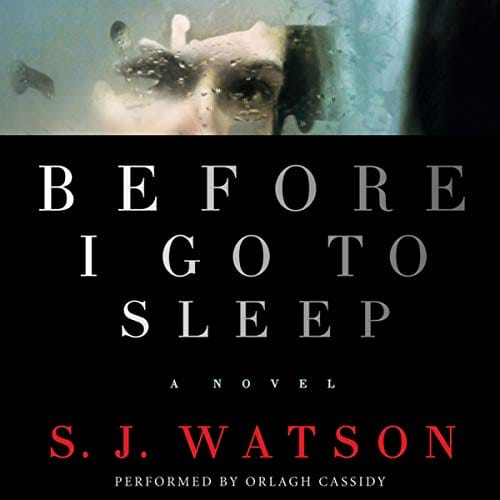Before I Go to Sleep: An In-Depth Look at the Gripping Amnesia Thriller
Explore the suspenseful world of Before I Go to Sleep, the hit novel and film about memory, identity and trust.

Introduction to "Before I Go to Sleep"
"Before I Go to Sleep" is a psychological thriller that first captivated readers in 2011 as the debut novel of British author S.J. Watson. Three years later it hit the big screen in a movie adaptation starring Nicole Kidman, Colin Firth and Mark Strong. Both the book and the film explore the fragile nature of memory, identity and trust through the story of Christine Lucas, a woman who wakes every morning with no recollection of her adult life. In this article we examine the plot, themes and key differences between the two versions, offering spoiler-free insights for newcomers and deeper analysis for fans.
Plot Overview
Christine Lucas suffers from a rare form of amnesia triggered by a violent incident. Each time she falls asleep, her short-term memories are wiped clean, forcing her to piece together her reality from scratch. She lives with Ben, the man who says he is her husband, but she cannot remember him—or anyone else—when she wakes. With the help of Dr. Nash, a neuropsychologist who encourages her to keep a private journal, Christine begins to uncover disturbing inconsistencies in the life story she has been told. Every morning she reads her own handwritten warning: “Don’t trust Ben.”
The narrative unfolds through Christine’s eyes, placing the audience in the unsettling position of never knowing more than the protagonist. As journal entries accumulate, the tension escalates, revealing a web of deception, half-truths and buried trauma leading to a jaw-dropping twist.
Themes and Symbolism
Memory and Identity
The novel asks a chilling question: if you lose your memories every night, do you remain the same person? Christine’s identity is eroded by her inability to form new memories, highlighting how the stories we tell ourselves create a coherent sense of self.
Trust and Vulnerability
Because Christine must rely on others for basic facts about her life, she is extraordinarily vulnerable. "Before I Go to Sleep" invites readers to imagine the terror of not knowing whether loved ones are protectors or predators. The story serves as a cautionary tale about the power imbalance created by concealed information.
The Bedroom as Metaphor
Much of the action unfolds in intimate domestic spaces, particularly the bedroom where Christine both loses and attempts to regain her memory. This setting symbolizes safety turned sinister—a private sanctuary that becomes a prison of uncertainty.
Book vs. Film: Key Differences
While the 2014 film adaptation remains largely faithful to the source material, notable changes were introduced to fit the visual medium and a tighter runtime.
Pacing and Structure
The novel’s epistolary format—told through diary entries—creates a slow-burn suspense that mirrors Christine’s painstaking reconstruction of her past. The film adopts a more traditional narrative structure, using quick flashbacks and montages to accelerate exposition and maintain cinematic momentum.
Character Depth
Readers spend hours inside Christine’s mind, forming an intimate connection with her fear and determination. On screen, Nicole Kidman conveys this inner turmoil through nuanced expressions, but some secondary characters, notably Dr. Nash, receive reduced backstory compared to the book.
Ending Variations
Without revealing spoilers, both versions feature a climactic revelation, yet the novel offers a slightly more ambiguous resolution than the film. The movie provides a clearer emotional catharsis, catering to audience expectations for closure.
Why "Before I Go to Sleep" Still Resonates
More than a decade after publication, "Before I Go to Sleep" remains a popular recommendation for fans of psychological suspense. Its core premise taps into primal fears of losing autonomy over one’s mind. Additionally, the book’s success paved the way for a resurgence of amnesia-driven thrillers, influencing titles like "The Girl on the Train" and the television series "Black Mirror" episode "Playtest."
The film, although receiving mixed reviews upon release, benefits from strong performances and sleek direction by Rowan Joffé. Streaming availability has introduced the story to new international audiences, proving that its themes are timeless and globally relatable.
Frequently Asked Questions
Is "Before I Go to Sleep" based on a true story?
No. While inspired by real neurological conditions, the plot is entirely fictional and dramatized for suspense.
Do I need to read the book before watching the movie?
Not necessarily. Both stand alone, but reading first allows deeper insight into Christine’s psyche. Conversely, watching the film first can heighten the tension of the novel’s slower buildup.
Are there significant content warnings?
The story includes themes of domestic violence, sexual content and psychological manipulation. Sensitive readers or viewers should proceed with caution.
Conclusion
"Before I Go to Sleep" succeeds as both a novel and a film because it turns a simple premise—what if you forgot everything overnight?—into a relentless exploration of human vulnerability. By weaving tight plotting with existential questions about memory and trust, S.J. Watson crafted a story that lingers long after the final page or end credits. Whether you dive into the book, press play on the movie, or experience both, prepare for a suspenseful journey that will have you questioning the reliability of your own perceptions before you go to sleep.



